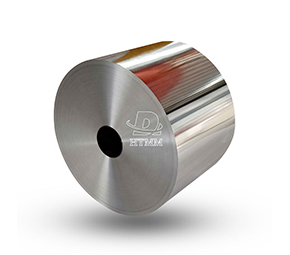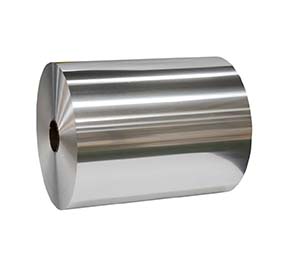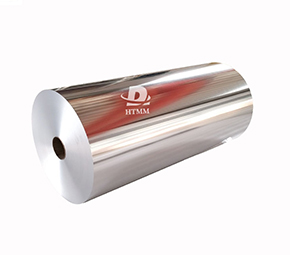Importing aluminum foil may seem easy, but it’s actually a skill that requires careful planning. As a seasoned importer with ten years under my belt, I have seen countless people stumble for quantity purchases. Some are overly conservative, importing only one or two containers at a time. As a result, they watch helplessly as they lose customers when the market runs out of stock. Others are overly aggressive, accumulating six months of stock all at once, only to be forced to sell at a loss when prices fall. The ideal purchase quantity is like the golden average: finding the optimal balance between financial stress, market risk and storage costs.
For example, our company specializes in 0.006mm-0.2mm aluminum foil for food packaging, with average monthly sales of approximately 200 tonnes. After years of experimentation, we found that the optimal purchase volume is 1.5 times our monthly sales, or about 300 tonnes. This gives two months of safety stock without tying up too much capital. Specifically, we usually purchase three containers (approximately 90 tonnes) twice a quarter. This allows us to enjoy the freight benefits of bulk purchases while maintaining inventory liquidity. Of course, this figure is not fixed and needs to be dynamically adjusted based on market conditions.
Market demand guides purchase volume.
The biggest risk in aluminum foil imports is working in isolation. During the pandemic last year, we accurately predicted an increase in demand for food packaging and seized the market opportunity to increase our purchases by 30% early. In contrast, earlier this year we misjudged the demand for construction aluminum foil, resulting in a backlog of 200 tonnes of thick foil for three months.
To accurately capture market demand, we have established three monitoring systems: first, a customer demand forecasting system where our top 20 customers are required to submit monthly demand forecasts for the next three months; second, tracking indices of industry prosperity, focusing on manufacturing data for downstream industries such as food and beverage and pharmaceutical packaging; And finally, dynamic competitor monitoring, gathering information through industry exchanges. Based on this information, we developed a formula for calculating purchase volume: base purchase volume = average monthly sales volume × 1.5 × market richness coefficient. When the prosperity coefficient is greater than 1.2, we increase purchases appropriately; When it is below 0.8, we control inventory strictly.
Calculate your capital carefully.
Importing aluminum foil is a capital intensive business. At current market prices, a ton of aluminum foil costs about 30,000 yuan including duties and VAT. A 25-ton container will tie up a capital of 750,000 yuan. If five containers are loaded simultaneously, 37.5 million yuan will be tied up. This does not include operational costs such as warehousing and labor.
Our company has developed a strategy for maximizing capital efficiency through data collection over the years. Firstly, we adopt a 30/70 sourcing strategy: 70% of supply is locked in through long-term contracts to ensure a stable supply, while 30% is procured flexibly to capture market opportunities. Second, we leverage deferred payments through financial instruments, such as letters of credit, to leverage differences in payment terms to increase capital turnover. Most importantly, we established an inventory turnover assessment system, requiring all products to have an inventory turnover period of no more than 60 days. Through these measures, we have achieved a six-fold annual capital turnover rate, well above the industry average of four times.
Procurement strategy in the face of supply chain risk
The current international trade environment is undoubtedly fraught with uncertainty. Both last year’s surge in shipping costs and this year’s volatile aluminum prices as a result of the Russia-Ukraine conflict are testing our purchasing acumen. Faced with this uncertainty, we have developed a "flexible procurement" model.
Specifically, we divide our total purchase volume into three categories: 50% for base purchases, performed as planned; 30% for flexible procurement, adjusted based on market conditions; and 20% for strategic reserves, used to respond to emergencies. Regarding supplier management, we adopt a "1+2+N" model: one main supplier, two backup suppliers, and N potential suppliers. This ensures both stable supply and flexibility. Regarding transport in particular, we now offer both sea and rail transport. While this approach is slightly more expensive, it greatly reduces the potential for supply chain disruption.
Practical experience in warehousing and logistics
We have learned a lot when it comes to warehouse management. Initially, we rented a regular warehouse, but inadequate humidity control caused a batch of millions of dollars worth of aluminum foil to get wet and cancelled.
Newcomers to the industry often make two common mistakes: either hesitate to purchase products or blindly stockpile large quantities of products with overconfidence. I recommend starting with small steps and quick progress. For example, if you estimate monthly sales to be around 50 tons, you can test the waters with a first batch of 30 tons. Even if the unit price is high, it will help you avoid overstocking. Remember to keep three ledgers: daily inventory updates, weekly cash flow reviews, and monthly customer analysis. Our company has a good practice of creating a purchasing profile for each customer, documenting their usage patterns, payment habits, and even personality traits of the person responsible.
Last year, at the height of the epidemic, we made an exception and took on a small client who used only 5 tonnes monthly. This client later became our regional agent. The market is now changing so rapidly that we hold weekly buying meetings to fine-tune our strategy based on the latest information. Sometimes, we even have to act counterintuitively, such as reducing purchases when aluminum prices rise, as downstream consumers will reduce consumption. Remember, a good importer should be like a surfer: they need to be able to adjust their strategy at any time as well as catch major trends. Finally, I want to share a message that planning is not as good as change, but change is most vulnerable to good planning.





